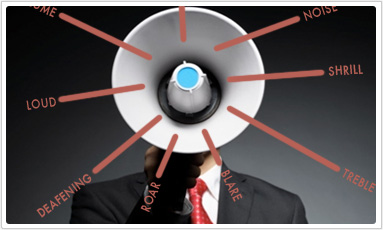
“Turn down that racket.” A familiar phrase used by our Grandfather back in the day. Usually the old guy was referring to our loud rock ‘n roll. Maybe even the TV, if the volume was cranked-up to ear-splitting range.
Words of wisdom. Your little ears were sensitive to that noise. And you never argue with your elders when, deep-down inside you knew they were right. Same rule applies now that you’ve got a job in the real world. Clatter in the workplace, especially if you’re employed in the manufacturing sector, can expose you to unsafe noise levels. It’s the top cause of hearing loss among adults.
Safe Levels
Sound is measured in decibels (db). That’s how we gauge the volume or sound intensity. Whispers are low on the scale. A constant banging, rumbling of machinery, over-the-edge music can be a real pain to your ears. Ask yourself? ENT Center of Austin asks you, how much of this “racket” are you subjected to hour-after-hour, day-after day?
For instance, your basic conversation rolls in at about 60 db. When you crank-up the lawnmower, you’re shooting the dbs to around 90. The Occupational Safety and Health Administration (OSHA) says that if you’re in an environment of more than 85 db or higher for long periods of time, you might want to get fitted for a hearing protection device. You are at risk.
Look at this handy chart we’ve compiled. The first number is the decibel count followed by what makes the sound:
- 60 — Normal conversation, bird song.
- 80 — Heavy traffic, ringing telephone.
- 85 to 90 — Motorcycle, snowmobile.
- 90 — Hair dryer, power lawn mower.
- 95 to 105 — Hand drill, spray painter, bulldozer.
- 110 — Chain saw.
- 120 — Ambulance siren.
- 140 — Jet engine at takeoff.
- 165 — Shotgun blast.
Interpretation
When you get into the 85 db range, there’s a moderate risk. Anything above 110 db is the danger zone. Here’s a look at how much time you can take when you’re in the presence of noise. First are the decibels. Obviously the second part is the period of time you can be exposed to the sound:
- 90 — 8 hours
- 92 — 6 hours
- 95 — 4 hours
- 97 — 3 hours
- 100 — 2 hours
- 102 — 1.5 hours
- 105 — 1 hour
- 110 — 30 minutes
- 115 — 15 minutes
The important thing you need to remember is the creeping-up of exposure times. Problems occur so gradually you might not feel you’re going deaf. There are no second chances. As degradation occurs, the loss of hearing is a forever-thing. Can’t reverse the damage.
Don’t Even Let It Begin
Get a comfortable pair of earplugs. Make sure you keep them clean on a daily basis. Never share them with a co-worker.
There are other hearing protectors. What a good pair should do is keep the range of sound down to under 85 db. Most of these preventive devices or plugs can be bought over-the-counter or can be custom-made.
Getting back to Gramps, you never want to evolve into old age using another phrase you may have heard him ask, “What did you say?” That’s not your style.
Image Source: bitterlawyer.com
Original Source: austinentmd.com/blog

